How to make an energy independent electric vehicle with a Kite Turbine.
Instructions
- Put a Kite Turbine in your car
- Park up (best on a windy hill)
- Fly the Kite Turbine
- Use it to charge the EV battery
Well sort of, yes.
We've flown a bunch of missions and made lots of power, done some car charging and made lots of tea in the field. Lovely. But as you'd expect with wind power, and especially with freaky flying wind power, it's a lot more complicated than that.
I started testing ideas on kite power in 2010, because kites can provide a lot of power with little material. Also the sky is bigger than a wind turbine and there's more power higher up.
Harnessing kite power and converting it to electrical energy - can't be too hard ! And it's a really good thing to achieve because it could be scalable.
Most Airborne Wind Energy Engineers start out like this, and also from being Kite Surfers.
After a lot of experimenting, My favourite method is the Kite Turbine.

It's simple, continuous rotary output, scalable yet workable on a small scale, mechanically autonomous (apart from launch & Land & as long as it's all balanced)
You can see the launching process sped up in this video
First of all the lifting kite is launched. It's job is to guide the turbine downwind, and give initial line tension to hoist the turbine.
The turbine is then released into the air using the back-line to hold it down.
The brake is released on the ground station so that rotation can start and regen can begin.
If you're going to build one consider this requirement set as a minimum

I'm going to add a few more IMU attitude and RTK GOS sensors to mine soon ... but don't worry about that yet.
The wise among you might now be thinking... That's bizarre - torque - sent along a string - but surely it would just over-twist?
And yes - without line tension (kites) and the extra rings between the lines- it would twist and has sometimes over-twisted in the field. The power transmission here is rotary. That's novel, but it works. We use normal Dyneema(R) rope tethers.
But How? This is where researching Tensile Rotary Power Transmission (TRPT) will help.
I'd recommend Oliver Tulloch's PhD and the Airborne Wind Energy Forum
TRPT works with 2 ratios, the geometry ratio (ring separation / ring diameter) and the force ratio (Axial tension / torque) . For a given geometry ratio you can safely apply a certain force ratio by adjusting the torque demand at the generator. Balance these and it works. More pull axially means a more torsionally rigid shaft = higher energy transfer capacity.
For your TRPT build... Have you considered all of these parts
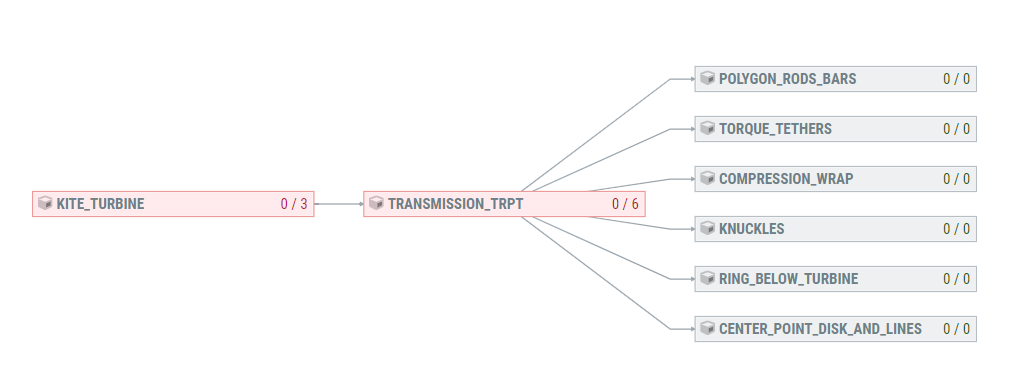
Now we have that tensile shaft power down on the ground we can plug it into a Power Take Off Wheel on an anchored ground generation station.

Notice that there are 2 sticks at the back of this ground station generator... Without them it get's wobbly.
This was a ground station and turbine combo I was preparing for the scouts (More about that at the bottom of this chat.
The ground station has to have a really good anchor. You never want to see a 20kg lump of edgy steel flung past your head by an angry kite.
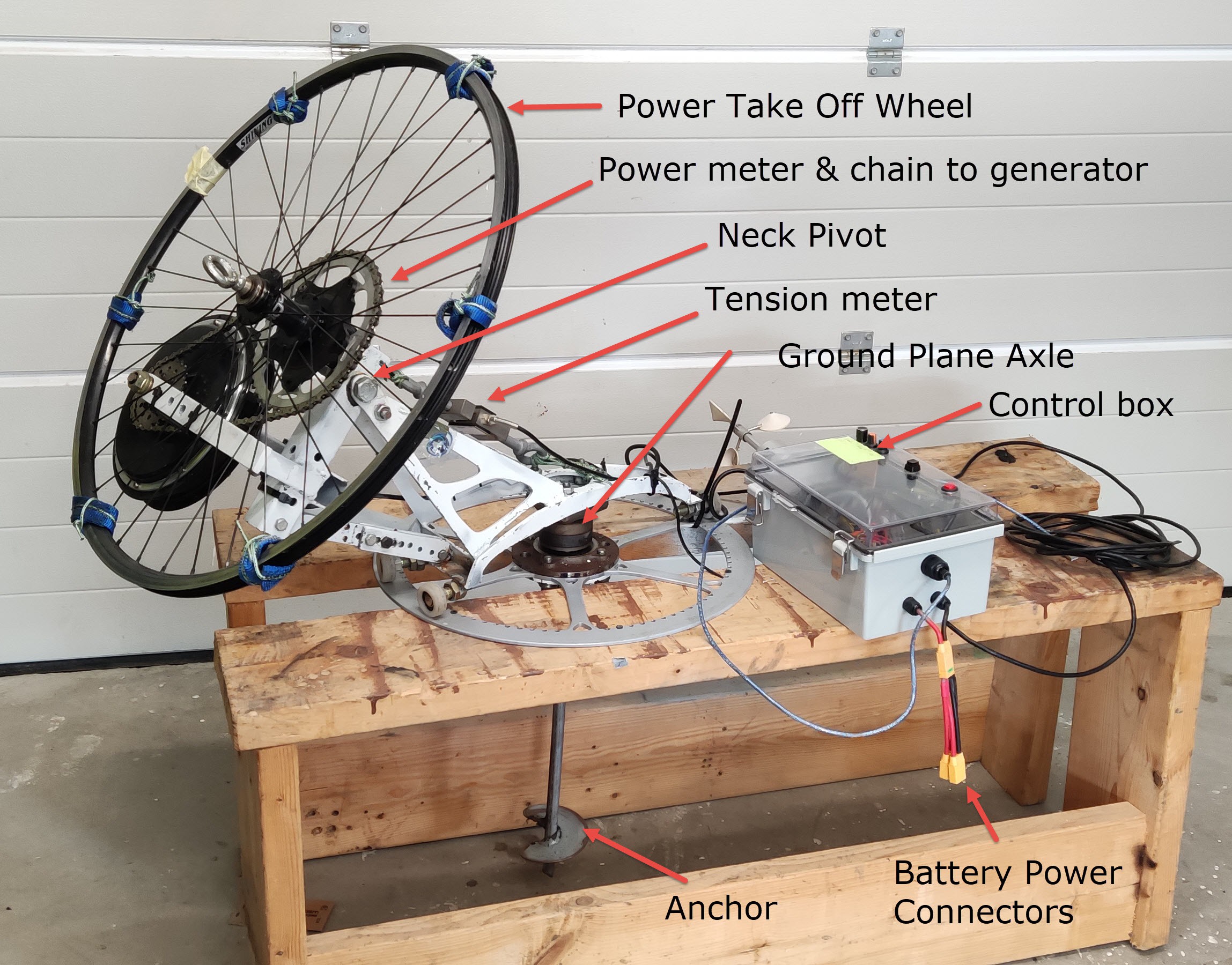
For ground station designs go here ground stations
Consider this as your minimum requirement set to build this one
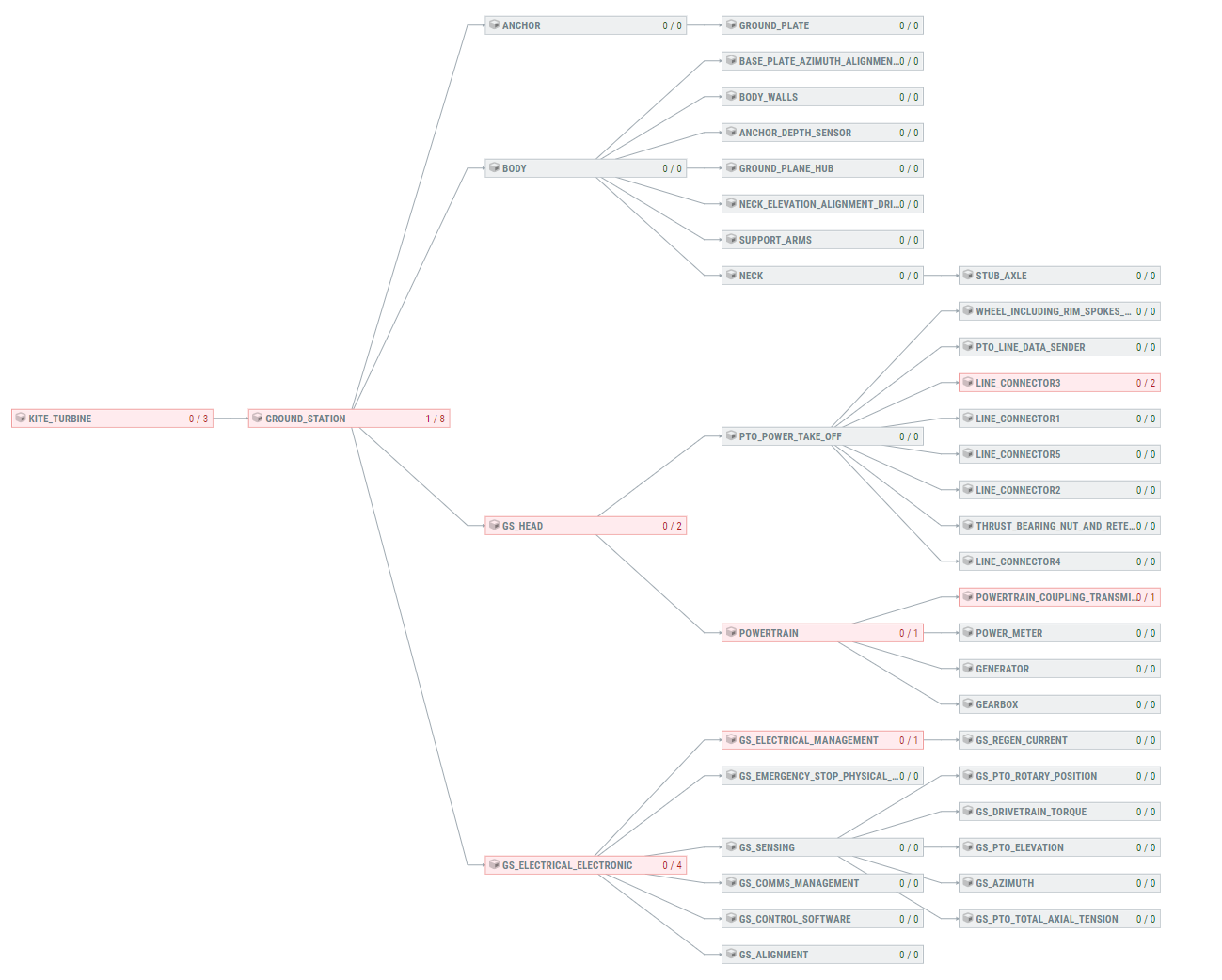
Going to have more sensors again on the next one.
The ground station motor/generator controller code can be found here DaisyKiteTurbineControl
it controls this rats nest
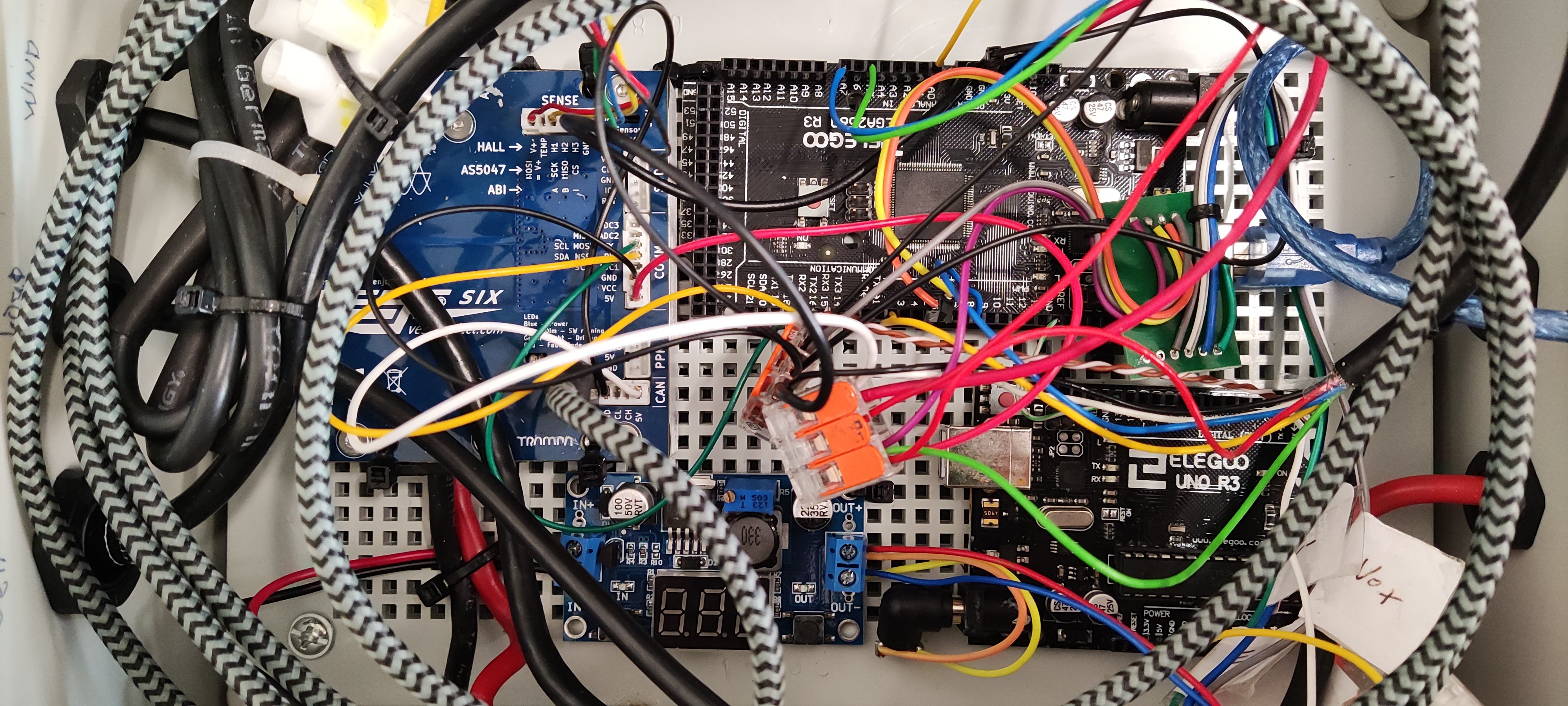
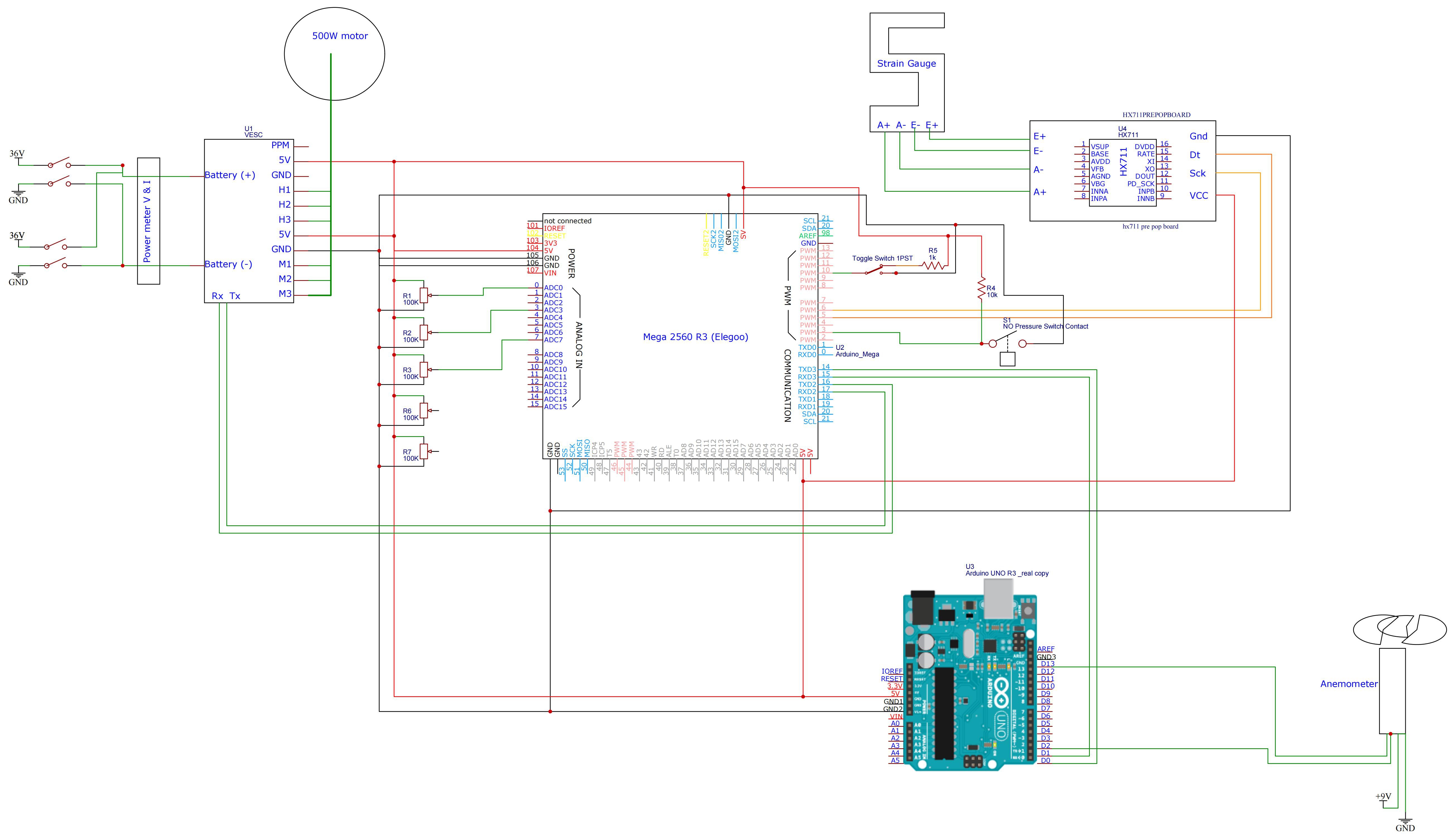
A lot more on making and operating Ground Stations in this video
With the software and knobs and sensors, You can govern the max regen and mix the levels of control from the tip speed ratio, the tension torque ratio and the speed trend. You can also hold a brake and boost forward for start up or unwinding a mistake.
You could be more thorough and structured using requirements checks like these and more
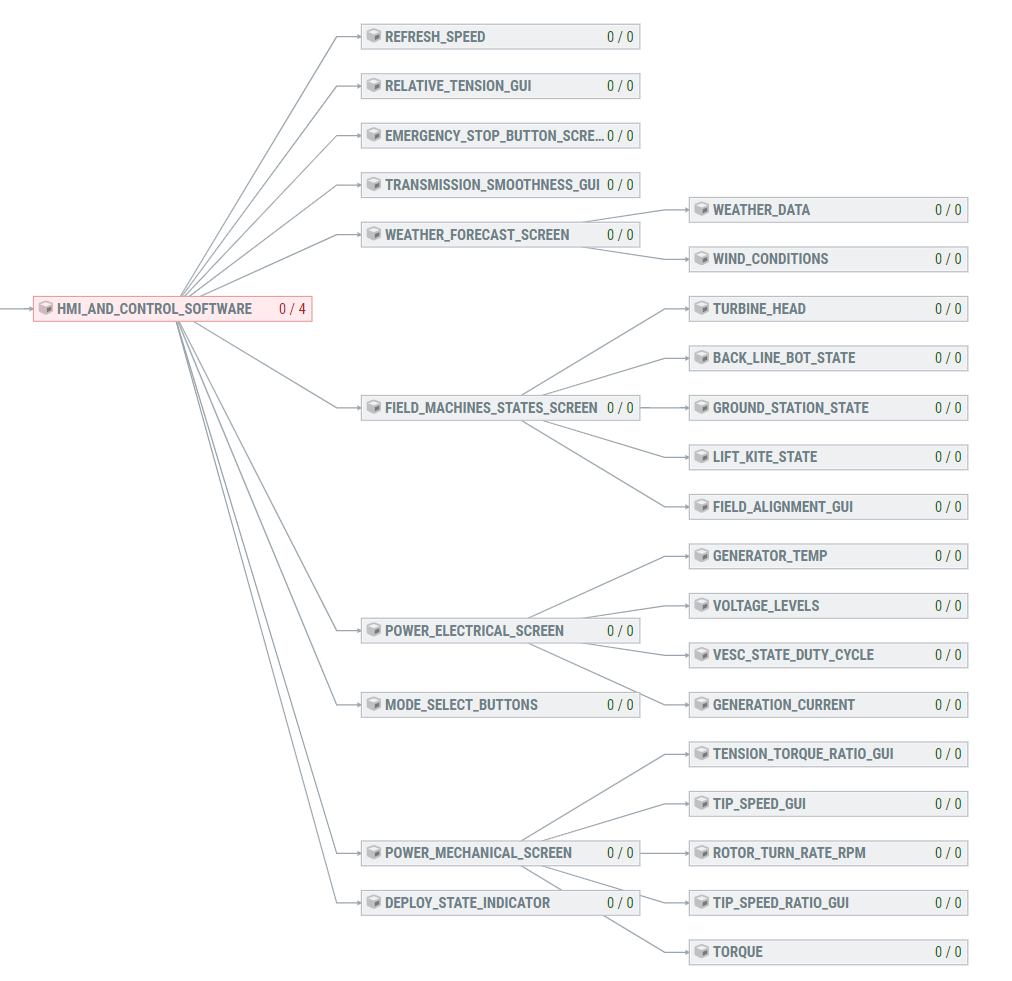
OK, nearly there.
Make sure your sram crank power meter (converted to the chainring sprocket) is connected to the wee bike computer.
Get a few powerful 36V e-bike batteries and connect 2 of them with XT-90-s anti spark plugs to the power in leads. Connect the Mega 2560 (way too slow for next revision) to your pc to get a stream of data.
Run the turbine to charge the batteries... just like that.
With your spare batteries, Connect them very carefully to a ~5kW inverter. Very Carefully.
Then fish out an EVSE car charger capable of selecting a lower than normal charging power
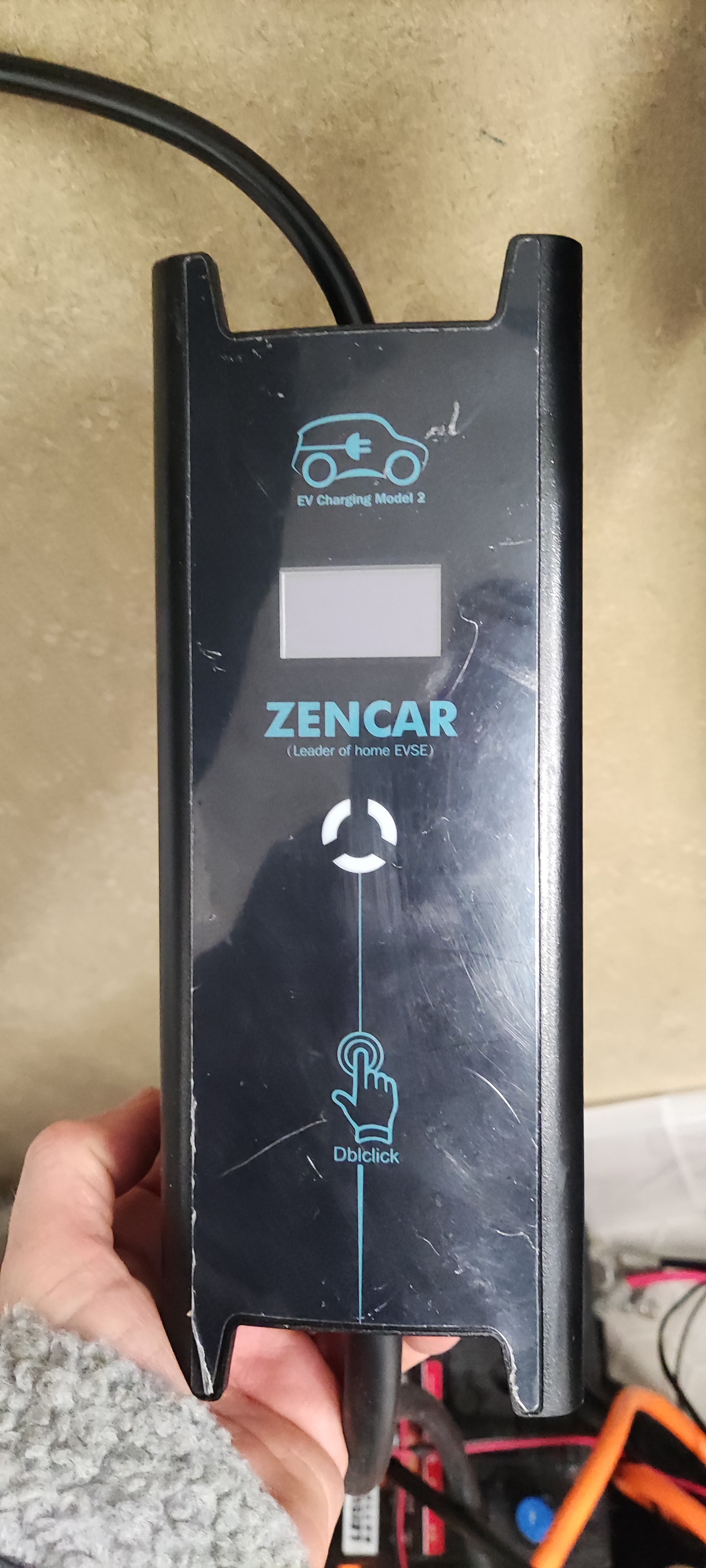
Plug the other end to your EV...
Hope you planned a long holiday and brought biscuits. Charging like this will take a while.
But congratulations, you now have an energy independent electric vehicle. Well Done!
Not one oil-rig, refinery, nor petrol pump in sight. Splendid job.
Oh, I forgot to tell you how to make it all.
Time to go to the instructions and motivational log pages...
There are a lot of videos on the youtube channel and the website. (New website too)
Also the forum https://forum.awesystems.info/ is a good place to find more detail and advice.
Hope that helps you for a start.
Our next mission - the automated 10kW system - with a robot to handle the backline launching... Tricky nah

Come along to the forum, or the jobsite, for some tea and oatcakes,...
If you want some expert opinion on the potential benefits of Kite Turbines
Read this report on Airborne Wind Energy by BVG Associates for AWEurope
Expect to spend ~ 5k $£e to build the system here... It will only be useful if you are careful not to crash it. Staying out all night to tend a turbine is just not practical.

That's why I'm moving to autonomous control next. There's plenty options how to do that too.
Have a wild time making Kite Turbines
Thank You
Oh before I go I had better provide
The Warning Section
How to Break your Kite Turbines
Flying a Kite Turbine looks a breeze on some of my videos.
There's nowhere better to be than a kite test field with a good wind...
And with the motivation of maybe making a massively scalable and much cleaner energy solution... Why wouldn't you do this?
In this Project Log Entry, I'm going to try put you off making a Kite turbine.
It's not always fun and games.
Making a mechanically autonomous Kite Turbine by prototyping came with a lot of mistakes and crashes.
We tested ~70 variations

As you can see, a lot of these models weren't perfectly balanced and neat. That, combined with - flying in turbulent wind fields, combined with the energy transmission and generation interfacing, combined with the mix of lifting and generating kite types... It wasn't always easy.
But they have come a long way. And I still crash them
A TV crew came to film & share this crash.
Usually if I'm going to goof up it's lack of strong and steady lift in the lift kite.
That's the first thing you launch and first thing you should test. I'd suggest steady 10kg line pull minimum.
This is the main reason we have to move to automation . . . It's too easy after laying everything out on the ground to convince yourself there enough wind in the small lifter you launched. doh.
If you want to be safer and you have time and a spare windsurf mast... This won't crash and it's handy for power testing ... But the mast bit won't scale well so it's not where my main focus is. Yet we will for the next while be using something similar for backline handling
Can still be scary testing on a mast if you're in the wrong spot
Again, if the lifter kite is low tension... Even if the turbine doesn't crash , the turbine head bearing could twist the backline...
At the other end of the spectrum of crash types - TOO MUCH POWER
You'll have noticed we're transmitting torque axially along a set of rotating lines which are held apart by rings.
That's all a bit novel.
If you have this turbine spinning at high speed and your control system is asking too much of the regeneration current when a Lull or gust hits... This is my favourite warning video. You do get to see one huge safety advantage of the backline here
Talking of Safety Advantages of a backline. I reckon there is a good argument that multi line kite systems are inherently better at preventing breakaway in the case of any component breaking as compared to single line kite systems.
OK
You should all now be able to start generating cleaner energy with Kite Turbines.
Thank You again for your interest and listening and everyone who has helped inspire and support this monstrous mission.
If you're one of those cool Cardano ADA holders who like to tip glorious projects like this.
wallet addr1qxmzzwycvkzhq7hzjsuj94fhs8uaq5yfnye4flctq208ms6xmgegkl9smalx0f4d0czqkef26qjgfwaqvxrwhf3lf3ysg0yu7l
Thanks
Do join in. Let's collaborate.
A happy wee video to end with.
Let's get making massive automated deployment networked farms of Kite Turbines soon
They could be a super efficient way to harvest clean energy
Rod
 Roddy "Rags" Read
Roddy "Rags" Read